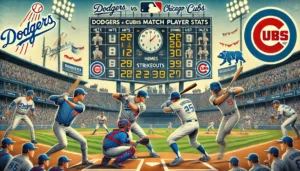The Role of Achilles’ Heel in Savage Worlds Adventure Edition (SWADE) and Super Powers Companion (SPC)
In the rich landscape of Savage Worlds—a tabletop RPG known for fast-paced action and a “Fast! Furious! Fun!” approach—character vulnerabilities add depth and dynamic storytelling to gameplay. Among the unique character traits in the Savage Worlds Adventure Edition (SWADE) and its Super Powers Companion (SPC) expansion, the Achilles Heel stands out as an impactful hindrance. Inspired by the myth of Achilles, whose one weak spot led to his downfall, this mechanic provides a balanced approach for players crafting characters with superhuman powers.
The Achilles Heel in Savage Worlds introduces the concept of vulnerability in a system that’s often geared toward powerful heroes and villains. This guide will walk through how Achilles Heel influences character-building, balances gameplay, and enhances storytelling. Whether you’re a player or a Game Master (GM), understanding Achilles Heel can provide insights that take your Savage Worlds experience to a new level.
What is Achilles’ Heel in Savage Worlds?
Achilles Heel is a hindrance in SWADE and SPC, which adds a specific weakness to an otherwise powerful character. In Savage Worlds, hindrances represent negative traits or challenges that come into play, balancing out a character’s abilities and creating opportunities for unique story elements. Achilles Heel, in particular, is a highly thematic choice for super-powered characters, as it highlights a singular vulnerability—a personal “kryptonite” that adds tension and stakes to the story.
Characters with Achilles Heel are generally superhuman or enhanced, gaining remarkable powers but being vulnerable to one distinct thing, substance, or condition. For instance, an invulnerable hero might be harmed by a rare element, or a powerful psychic might be defenseless against certain magic types. This weakness gives a specific focus for foes to exploit, adding strategic layers for GMs and challenging players to think creatively.
The Origin of Achilles Heel in Myth and RPG Context
The term “Achilles’ heel” dates back to Greek mythology, where the legendary hero Achilles was nearly invincible—except for his heel, the one spot vulnerable to injury. This myth has shaped countless stories about heroes with “fatal flaws,” from Hercules’ pride to Superman’s vulnerability to kryptonite. By introducing Achilles Heel as a hindrance in Savage Worlds, the game captures this timeless narrative, allowing players to create powerful yet relatable heroes.
Achilles Heel in Savage Worlds Adventure Edition and SPC echoes this mythological idea, providing a game mechanic for weakness amid strength. The hindrance serves a critical function by balancing out powerful characters in a way that feels narratively cohesive and gameplay-friendly.
Implementing Achilles Heel in SWADE and SPC
In SWADE and the Super Powers Companion, Achilles Heel is designed to make heroes vulnerable in a particular way, while still allowing them to be otherwise formidable. Here’s how it works in practice:
1. Choosing the Achilles Heel: During character creation, players can select Achilles Heel as a hindrance if using the SPC rules. This could mean being vulnerable to a specific weapon type, element, or even a condition like mind control or energy dampening. GMs often encourage players to think creatively about these weaknesses to craft memorable characters.
2. Establishing the Mechanic: The Achilles Heel hindrance in SPC typically doubles the damage received from attacks that involve the chosen weakness. For example, if a character with Achilles Heel is vulnerable to fire, any fire-based attacks would deal extra damage to them. This makes encounters more intense as characters face the risk of being severely wounded by their specific vulnerability.
3. Leveraging Achilles Heel as a Story Element: Achilles Heel doesn’t just function as a mechanical weakness—it also shapes character backstories and story arcs. Heroes may seek out protective artifacts, avoid certain foes, or grapple with the limitations imposed by their vulnerability. This leads to a rich interplay between player agency and narrative drama, offering opportunities for character growth and meaningful in-game decisions.
4. Balancing Gameplay: Achilles Heel is essential for balance, particularly in SPC where super-powered characters can otherwise overshadow the game. This hindrance offers GMs a way to counterbalance powerful abilities without hampering the enjoyment of playing a super character. By targeting a hero’s specific weakness sparingly, GMs can heighten stakes without making the player feel punished.
Why Achilles Heel Works in Savage Worlds
Savage Worlds is renowned for its cinematic and high-stakes gameplay, where characters face perilous situations that test their skills and courage. Achilles Heel fits into this mold by adding unpredictability. Here’s why Achilles Heel works so well in Savage Worlds:
1. Adds Tension and Excitement: Achilles Heel introduces a layer of suspense, keeping even the most powerful characters on their toes. Players must anticipate the impact of their weakness, creating tension in battles and story arcs.
2. Encourages Strategic Play: Knowing they have a vulnerability, players are often more strategic, seeking to mitigate the impact of their Achilles Heel. This might involve avoiding certain encounters, gathering intelligence on foes, or investing in defensive items or allies.
3. Deepens Character Backstory: Achilles Heel often ties closely to a character’s history or psychology. Perhaps their weakness represents a traumatic past experience, a family curse, or an event that shaped their powers. These connections give characters a richer backstory, enhancing role-playing and engagement.
4. Supports Balanced Encounters: For GMs, Achilles Heel offers an organic way to challenge powerful heroes without overwhelming them. By selectively deploying the hindrance, GMs can keep the game fair and balanced, ensuring super-powered heroes don’t overshadow non-powered allies.
5. Promotes Creative Problem-Solving: Achilles Heel forces players to think outside the box, relying on skills or allies they might otherwise overlook. The vulnerability opens up room for creative problem-solving, which is a core part of Savage Worlds’ gameplay ethos.
Examples of Achilles Heel in Play
Achilles Heel can take many forms, depending on the nature of a character’s powers and the style of the campaign. Here are a few examples of how Achilles Heel might be used in Savage Worlds:
1. Elemental Weakness: A hero with ice powers might be susceptible to fire, taking double damage from any fire-based attacks. This forces the character to keep their distance from heat sources and fiery foes, adding tactical layers to battles.
2. Psychic Vulnerability: A powerful telepath might have an Achilles Heel against certain psionic attacks. When facing another telepath or encountering psychic traps, this character must exercise caution, knowing they’re vulnerable in a unique way.
3. Rare Substance: A super-strong character could have an Achilles Heel to a rare mineral or metal. This weakness becomes a plot point if the GM introduces foes with weapons forged from this substance, adding drama and urgency to encounters.
4. Mystical Conditions: A magically attuned character could be vulnerable to dispelling or binding magic, making it difficult for them to use their powers in certain areas or against certain foes. This adds risk to encounters involving powerful wizards or magical beings.
5. Environmental Weakness: A character with enhanced speed or strength may be particularly susceptible to extreme cold or altitude, limiting their abilities in certain environments. This makes journeys into specific regions or terrains challenging and risky.
Tips for GMs and Players to Use Achilles Heel Effectively
For Game Masters:
Use Sparingly: GMs should use Achilles Heel sparingly and with a purpose. Constantly targeting a character’s weakness can feel punitive, so aim to make it an occasional threat that adds excitement rather than frustration.
Balance Story and Mechanics: Introduce story reasons why a character’s Achilles Heel might come into play. For example, if a hero is vulnerable to electricity, they might face an electrified villain or enter a facility with exposed wires.
Reward Adaptation: Reward players who develop clever ways to mitigate their Achilles Heel. This encourages resourcefulness and gives players a sense of accomplishment.
For Players:
Lean into the Weakness: Embrace Achilles Heel as part of your character’s journey. Consider how your character copes with the knowledge of their weakness and role-play the tension it brings.
Prepare Countermeasures: Invest in equipment, allies, or tactics that can help reduce your vulnerability. If your Achilles Heel is cold, carry gear to resist it, or partner with an ally who can shield you.
Weave it into Backstory: Incorporate your Achilles Heel into your backstory, giving it personal significance. This makes encounters involving your weakness more meaningful and can deepen role-playing opportunities.
Concluding Thoughts: The Strength of Weakness
Achilles Heel in Savage Worlds Adventure Edition and Super Powers Companion transforms character vulnerabilities into compelling gameplay mechanics. By allowing characters to have a specific, exploitable weakness, the game brings mythological concepts to life in a way that feels both powerful and grounded. Whether you’re creating a new hero or running a campaign, embracing Achilles Heel can lead to a richer, more engaging Savage Worlds experience. After all, it’s not just a character’s strength that defines them but also how they face and overcome their greatest vulnerabilities.














Post Comment